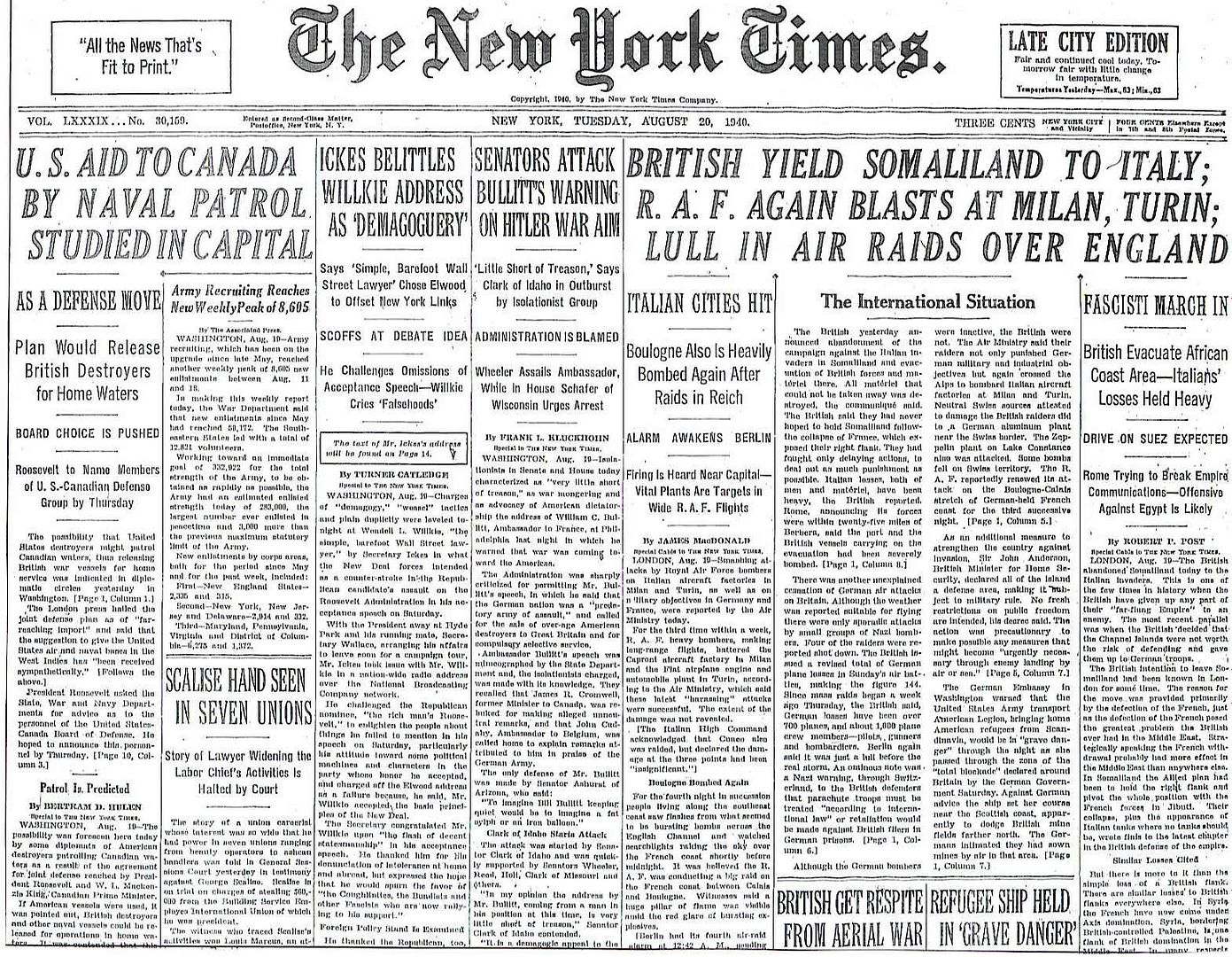
Posted on 08/20/2010 4:58:41 AM PDT by Homer_J_Simpson

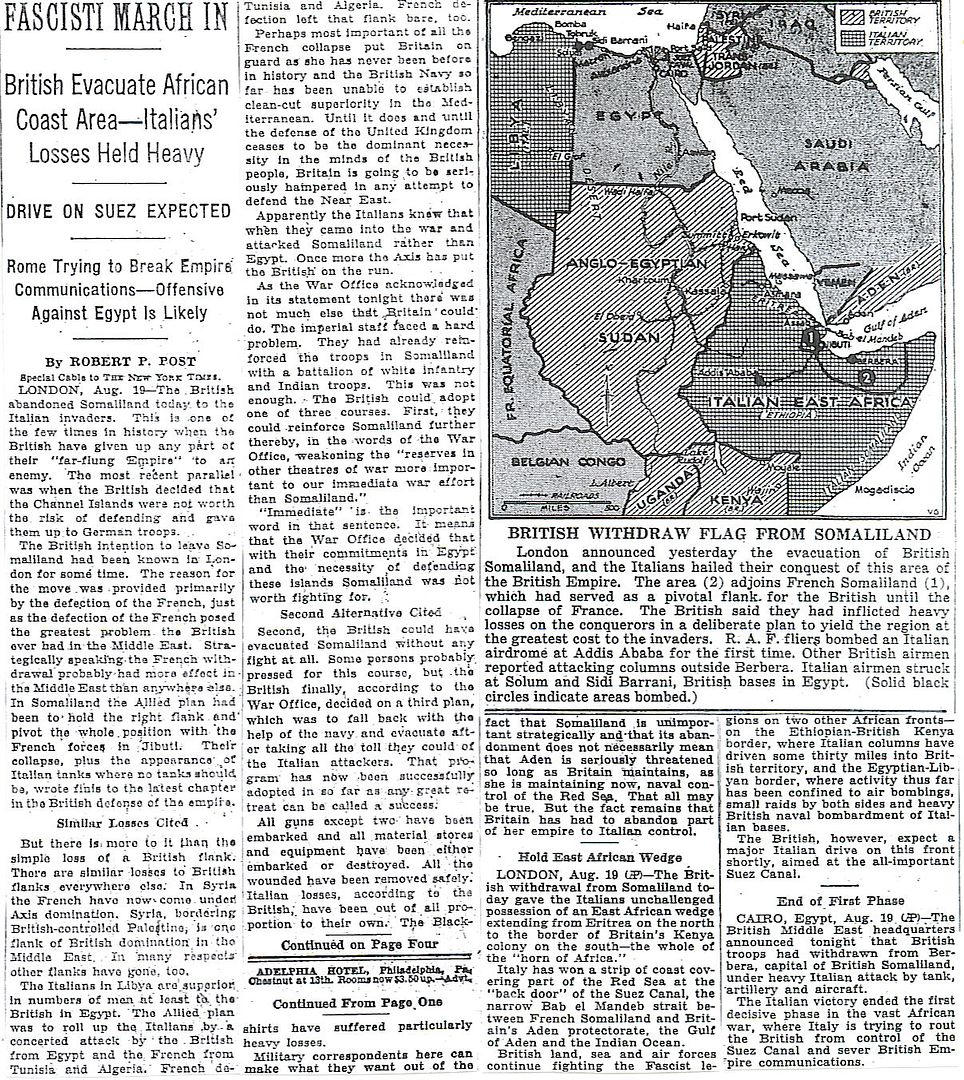
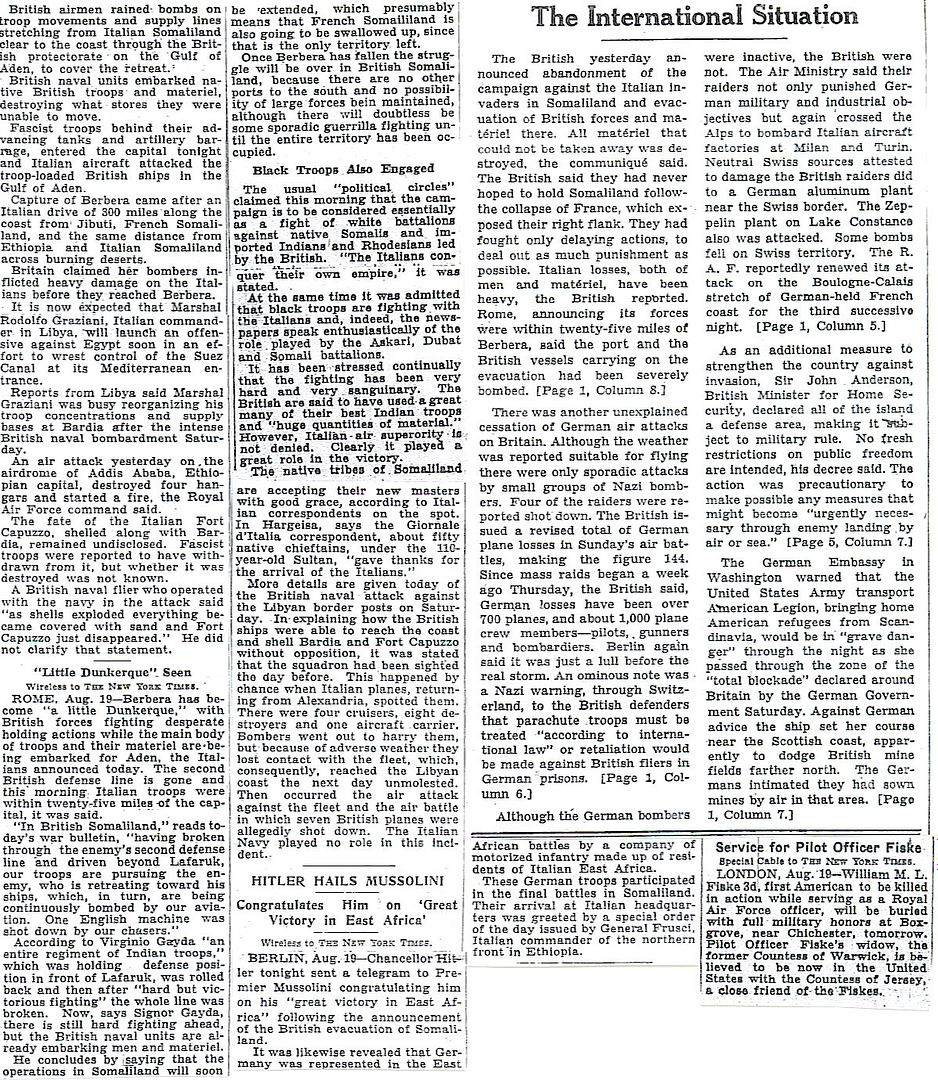
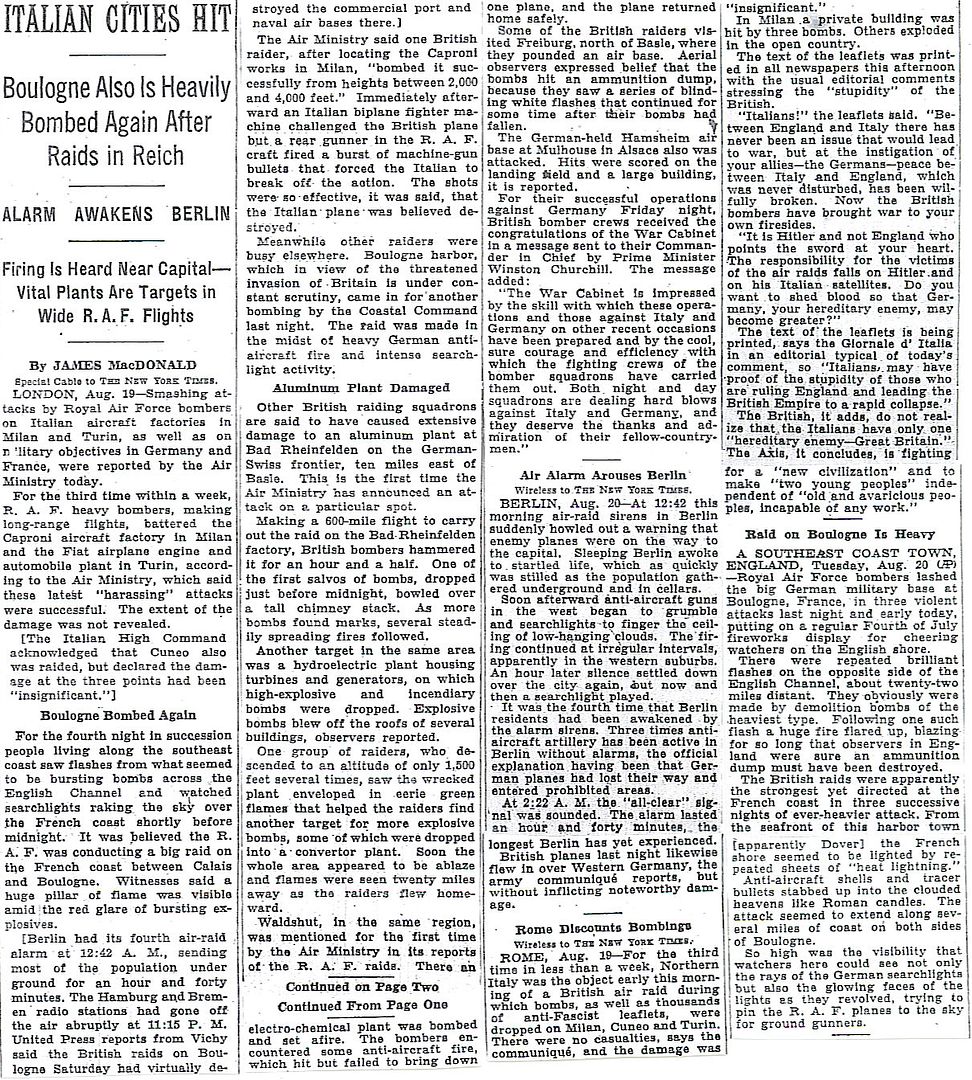
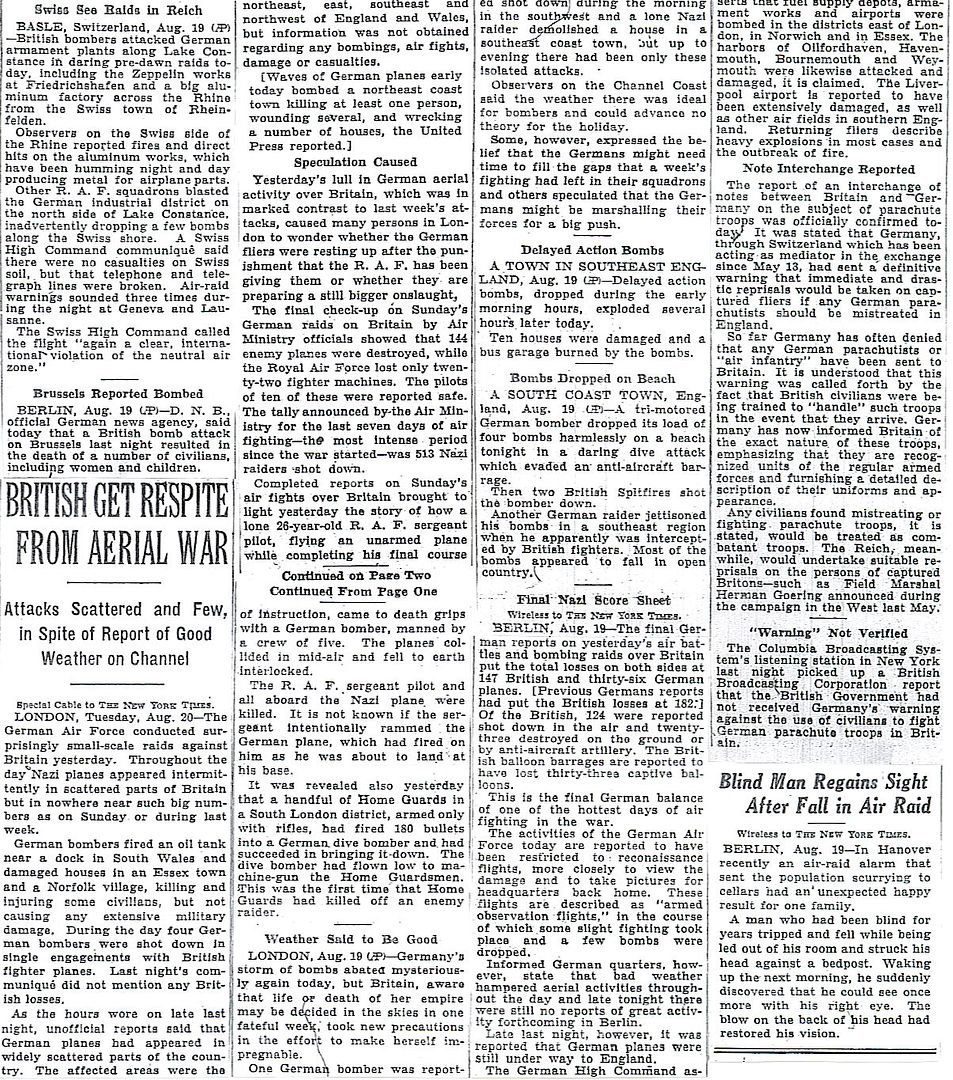
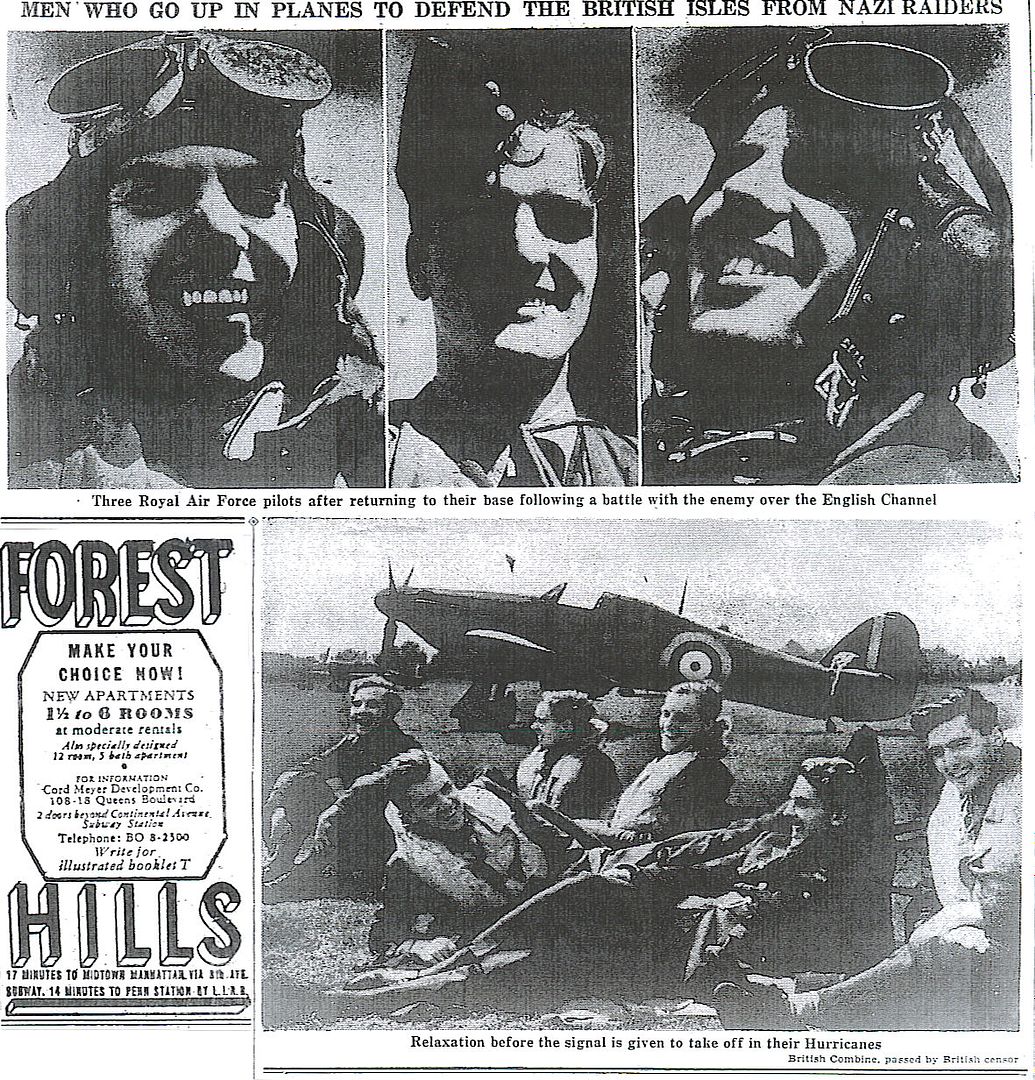
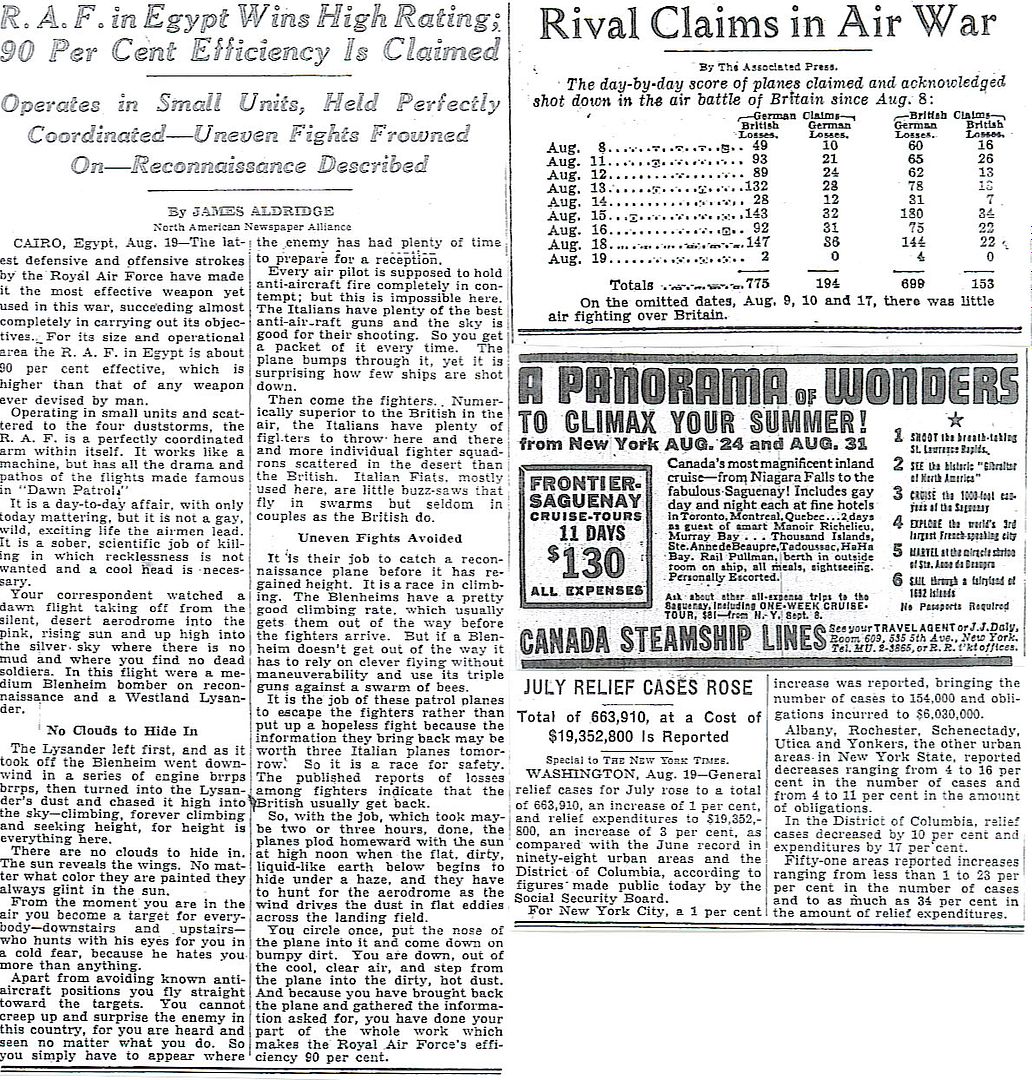
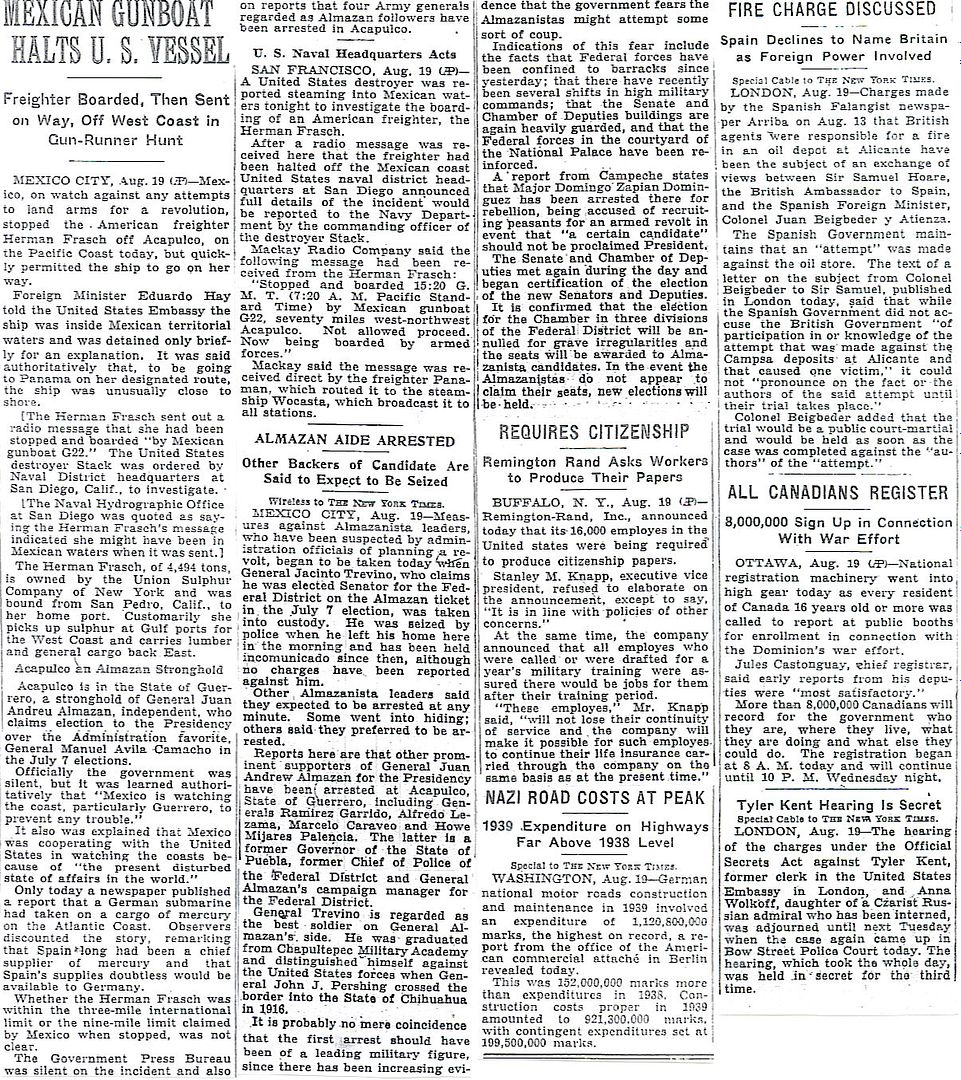
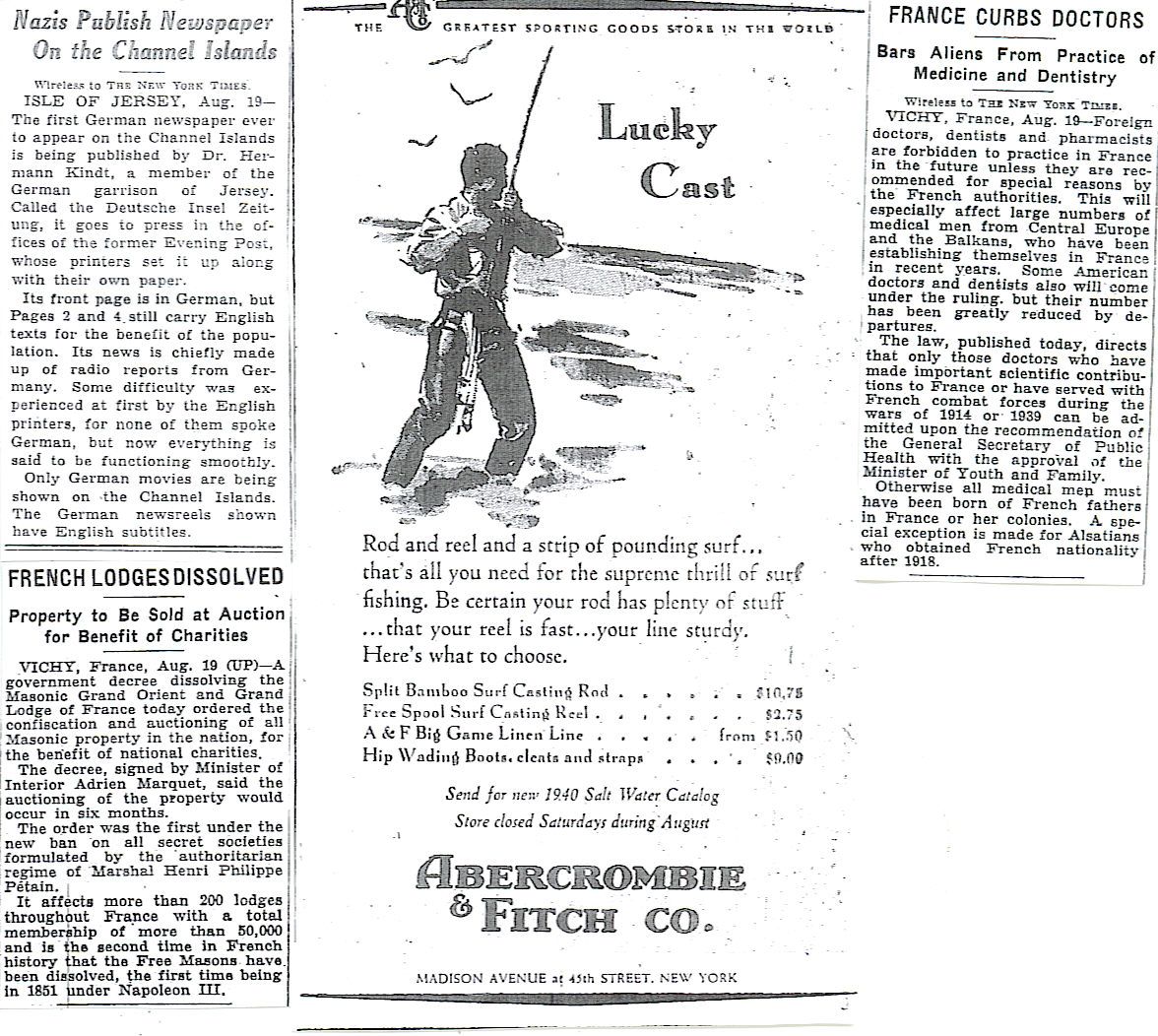
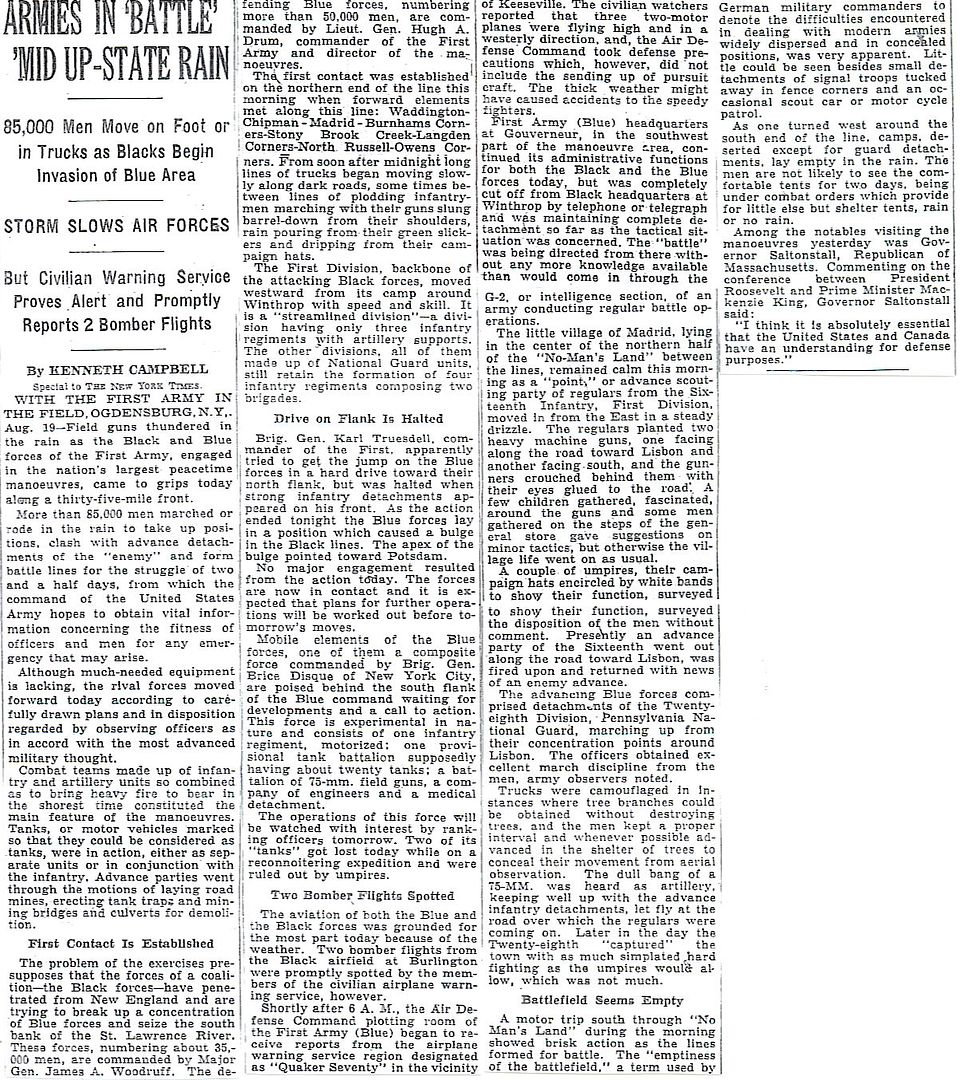
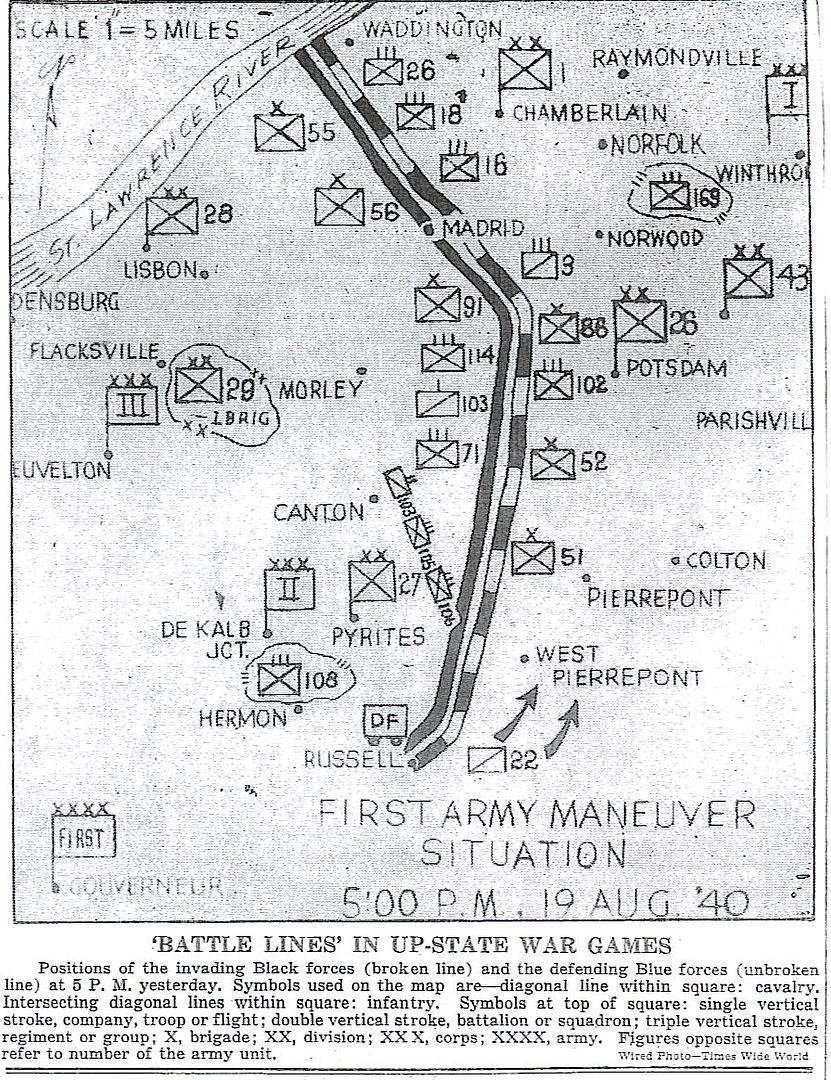
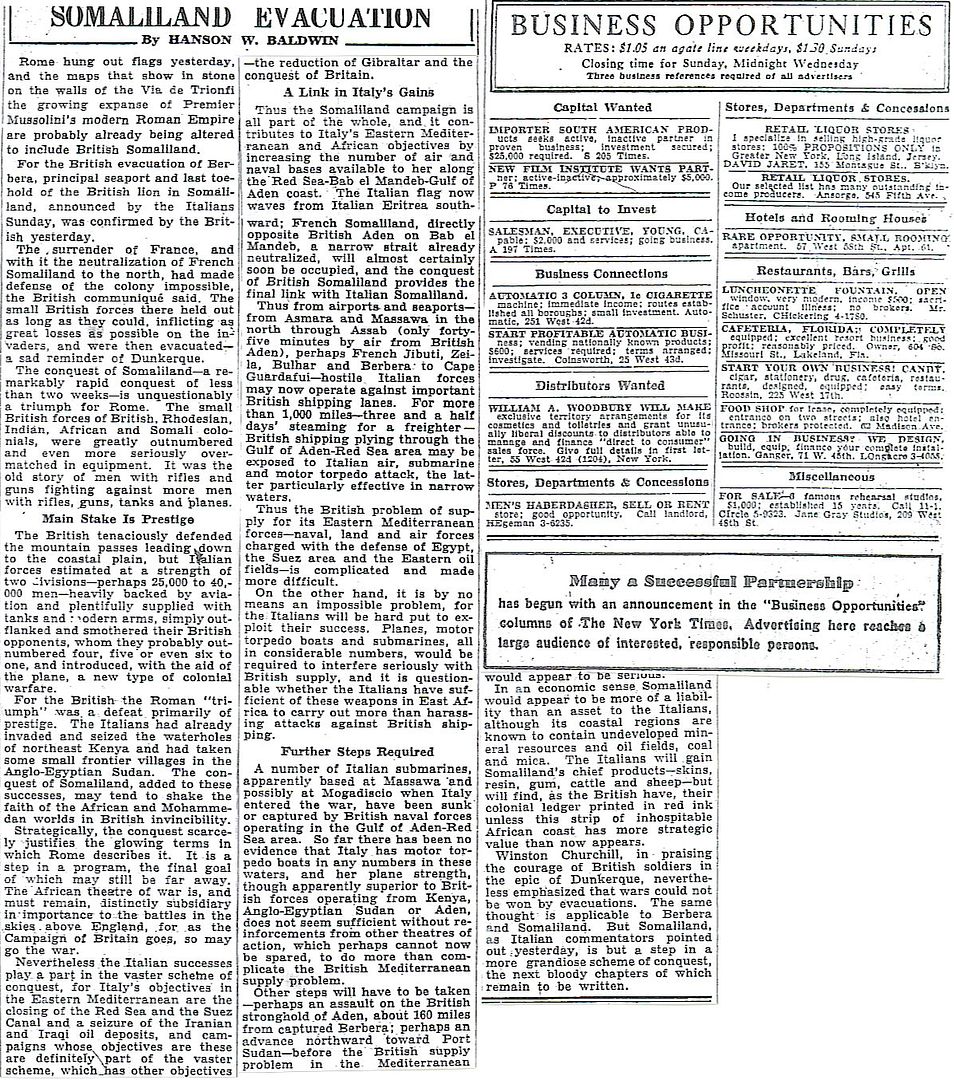

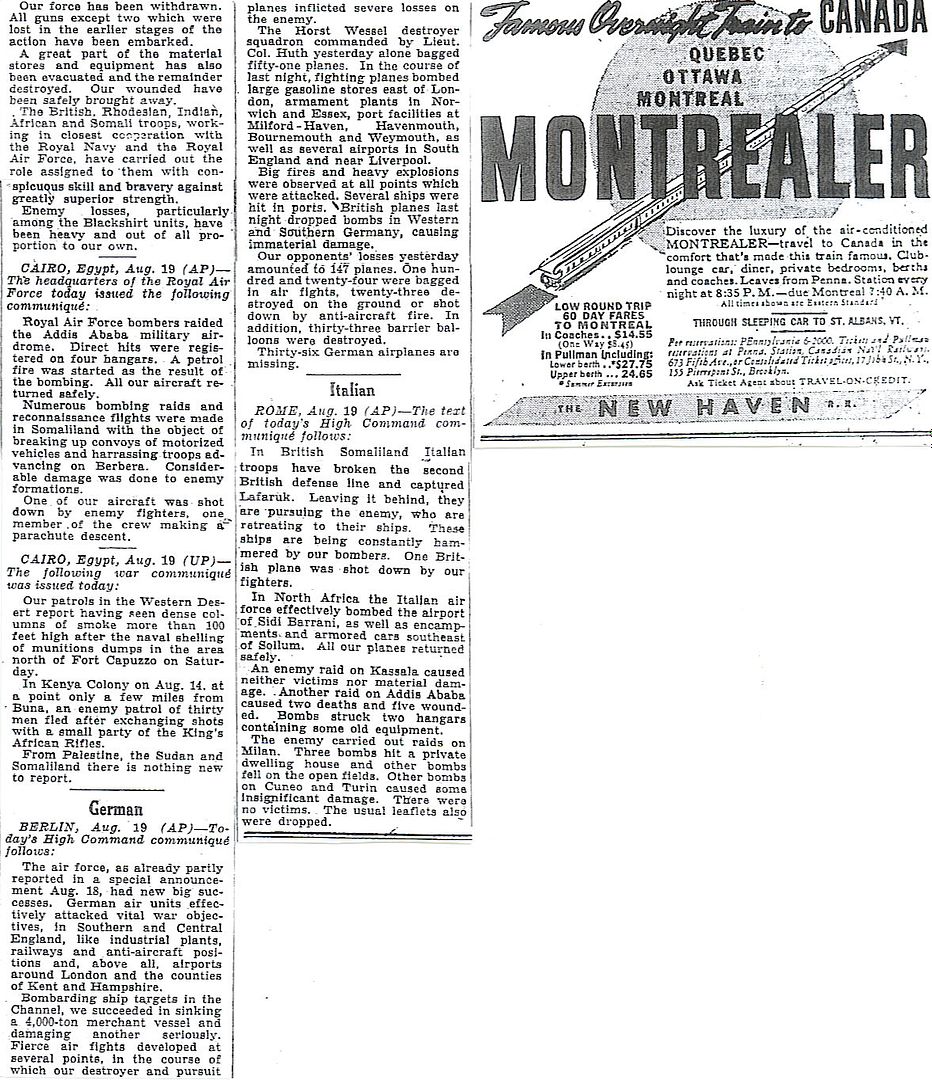
Plus a special guest map from Michael Korda’s, “With Wings Like Eagles,” showing the air defenses of England and Wales, August 1940.
http://www.onwar.com/chrono/1940/aug40/f20aug40.htm
Churchill pays tribute to fighter pilots
Tuesday, August 20, 1940 www.onwar.com
From London... Churchill produces another of his famous fighting speeches. His message is a tribute to the RAF fighter pilots: “Never in the field of human conflict was so much owed by so many to so few.” In addition, and of more concrete importance to the course of the war, is an official announcement that bases will be leased to the United States.
http://homepage.ntlworld.com/andrew.etherington/month/thismonth/20.htm
August 20th, 1940
UNITED KINGDOM:
RAF Bomber Command: 120 RAF bombers attack targets in Germany and airfields in France, Belgium and the Netherlands.
London: Winston Churchill addressed the House of Commons today and praised the RAF for its heroic struggle against the Luftwaffe.
“The gratitude of every home in our island, in our Empire, and indeed throughout the world ... goes out to the British airmen who, undaunted by odds , unwearied in their constant challenge and mortal danger, are turning the tide of the world war”, he said. “Never in the field of human conflict was so much owed by so many to so few. All hearts go out to the fighter pilots, whose brilliant actions we see with our own eyes day after day.” Comparing this war with the last, the Prime Minister found many differences: “The slaughter is only a small fraction, but the consequences to the belligerents have been even more deadly. We have seen great countries with powerful armies dashed out of existence in a few weeks ... Moves are made upon the scientific and strategic boards, advantages gained by mechanical means.”
He continued: “There is another more obvious difference from 1914. The whole of the warring nations, not only soldiers, but the entire population, men, women and children ... Our people are united and resolved, as they have never been before. Death and ruin have become small things compared with the shame of defeat.”
Churchill also announces that bases in the Caribbean Sea will be leased to the United States.
Destroyer HMS Eridge launched.
Minelayer HMS Latona launched.
Submarine HMS Undaunted is launched.
Minesweeping trawler HMS Almond is commissioned.
Minesweeping trawler HMS Resparko is bombed and sunk off Falmouth. (Dave Shirlaw)
RAF Fighter Command: Luftwaffe planes attempt to stoke the fire at Llanreith and Erpro 210 interfere with a convoy off Aldeburgh {East Coast} before striking sharply at Southwold’s defences.
Weather restricts German activities. Manston and Martlesham attacked. Polish 302 Squadron in action for the first time shooting down a Ju88 on its way to bomb the airfield at Thornaby, Yorkshire.
Night raids take place on the Rolls-Royce works at Derby.
Losses: Luftwaffe, 7; RAF, 2.
ÉIRE: A Luftwaffe Focke Wulf FW 200C-1 Condor, coded “F8+KH” and assigned to Kampfgeschwader 40 (KG 40), crashes at 1410 hours local on the lower slopes of Mount Brandon on the Dingle Penninsula in County Kerry.
This was the second Luftwaffe aircraft to crash in the country during World War II. The Condor had departed Abbeville, France, on a reconnaissance mission over northwestern Ireland and had been damaged by AA fire from a ship. All of the crew survived. Exactly 48 years later, the pilot and a crewman returned to the spot and met an Irish woman who had helped them on this day. (Jack McKillop)
GERMANY: U-89 and U-130 laid down. (Dave Shirlaw)
ITALY: Rome: Mussolini announces a blockade of British ports in the Mediterranean.
MEDITERRANEAN SEA: Italian planes bomb Gibraltar.
CHINA: Shansi Province: The Japanese army’s strategic security network of garrisons in northern China was suddenly cut off from the world today as 40,000 men of the Chinese Communist Eighth Route Army launched a series of well-coordinated surprise attacks on road and rail installations, severing communications in the area.
The success of the attacks by the Army’s 115 regiments provides a much-needed morale boost for the Chinese forces. and will help to silence critics of the Kuomintang who claim that the Communists are more intent on attacking them than the Japanese.
CANADA: Corvette HMS Fennel launched Sorel, Province of Quebec. (Dave Shirlaw)
MEXICO: Exiled Soviet revolutionary Leon Trotsky is fatally wounded by an ice-ax wielding assassin at his compound outside Mexico City. The killer—Ramón Mercader—was a Spanish communist and probable agent of Soviet leader Joseph Stalin. Trotsky (real name Lev Davidovich Bronshtein) will die of his wounds tomorrow at age 60. Trotsky, who was born in the Ukraine of Russian-Jewish parents, was a theorist and a leader in both the 1905 and 1917 revolutions. Appointed Lenin’s secretary of foreign affairs after the 1917 revolution, he negotiated with the Germans for an end to Russian involvement in World War I. In 1918, he became war commissioner and set about building up the Red Army, which succeeded in defeating anti-communist opposition in the Russian Civil War. In the early 1920s, Trotsky seemed the heir apparent of Lenin, but he lost out in the struggle of succession after Lenin fell ill in 1922. In 1924, Lenin died, and Joseph Stalin emerged as leader of the USSR. Against Stalin’s stated policies, Trotsky called for a continuing world revolution that would inevitably result in the dismantling of the increasingly bureaucratic Soviet state. He also criticized the new regime for suppressing democracy in the Communist Party and for failing to develop adequate economic planning. In response, Stalin and his supporters launched a propaganda counterattack against Trotsky. In 1925, he was removed from his post in the war commissariat, in 1926 he was expelled from the Politburo and in 1927 from the Communist Party. In January 1928, Trotsky was deported by Soviet leader Joseph Stalin to Alma-Ata in remote Soviet Central Asia. He lived there in internal exile for a year before being banished from the USSR forever by Stalin. During the 1930s, he lived on the Turkish island of Prinkipo, France, Norway and he was finally granted asylum in Mexico in 1936. Settling with his family in a suburb of Mexico City, he was found guilty of treason in absentia during Stalin’s purges of his political foes. He survived a machine gun attack but finally fell prey to Ramón Mercader who had won the confidence of the Trotsky household. The Soviet government denied responsibility, and Mercader was sentenced to 20 years in prison by Mexican authorities. (Jack McKillop)
ATLANTIC OCEAN: The German submarine U-51 is sunk in the Bay of Biscay west of Nantes, France, in position 47.06N, 04.51W, by a torpedo from the RN submarine HMS Cachalot. All hands on the U-boat, 43-men, are lost. (Jack McKillop)
U-46 attacked SS Leonidas M Valmas. Constructive total loss.
U-A sank SS Tuira in Convoy OB-198. (Dave Shirlaw)
http://worldwar2daybyday.blogspot.com/
Day 355 August 20, 1940
Battle of Britain Day 42. Clouds and rain again restrict the morning to reconnaissance flights, although the English Channel is clear and convoys are attacked. At 2.45 PM, 190 German aircraft fly up the Thames Estuary and circle back without dropping any bombs. They are intercepted and 5 shot down. In the afternoon, Marston airfield is again bombed & strafed and 1 Spitfire is shot down. The still-burning oil tanks at Llanreath near Pembroke Dock, South Wales, are bombed again. In total, 7 German aircraft and 3 RAF fighters are lost. Churchill makes a speech in the House of Commons in praise of the RAF fighter pilots. “Never in the field of human conflict was so much owed by so many to so few.” He also announces leasing of bases in Newfoundland and the West Indies to USA. He does not mention that this is in exchange for old US Navy destroyers to be loaned to Britain to defend against the anticipated German invasion. http://www.fiftiesweb.com/usa/winston-churchill-so-few.htm
At 00.27, 400 miles West of Ireland, UA sinks Panamanian collier Tuira (2 killed).At 9.50 PM, U-46 torpedoes Greek steamer Leonidas M. Valmas 50 miles Northwest of Ireland. The ship does not sink due to its cargo of wood but 16 crew die in the fire. 2 survivors are rescued by British destroyer HMS Arrow and landed in the Clyde, Scotland on August 27.
British submarine HMS Cachalot torpedoes U-51 in the Bay of Biscay 100 miles West of St. Nazaire, France. U-51 sinks with all 43 hands lost.
350 miles East of New Plymouth, New Zealand, German armed merchant cruiser Orion chases British steamer Turakina (carrying 4000 tons of lead, 1500 tons of grain, 7000 tons of wool) and sinks her with prolonged shellfire. 38 crew are killed. Risking attack from the New Zealand Navy (which has been alerted by radio signals from Turakina), Orion spends 5 hours rescuing 21 survivors from the sea. They will be released 2000 miles North on Emirau Island, near Papua New Guinea, on 21 December. http://www.bismarck-class.dk/hilfskreuzer/orion.html
Date: 20th August 1940

Enemy action by day
Enemy action was again on a reduced scale, consisting mostly of reconnaissances and a number of raids by single aircraft which attacked targets in East Anglia.
One raid of 190 aircraft penetrated to the Thames Estuary where it was successfully driven off.
Manston was attacked without success by twelve enemy fighters at 1455 hours.
North and East Coasts
In the morning, one raid of 3+ flew to Orfordness and attacked objectives near Chelmsford and Lowestoft. This raid was intercepted and one Me110 destroyed.
In the afternoon, four small raids approached East Anglia some of which penetrated inland. Interceptions were not favoured by weather conditions. Later, a convoy East of Dunwich was attacked and also objectives at Great Yarmouth, Southwold and Wattisham. Two raids were intercepted and one Ju88 destroyed.
South East Coast
During the morning a number of small raids, mostly reconnaissances, were plotted in the Straits of Dover and the Thames Estuary.
At about 1445 hours, 80+ aircraft were concentrated behind Calais and this was plotted as 190 aircraft when it crossed the coast between Dover and Manston and flew to the Estuary and Canterbury areas. It was intercepted and five aircraft were destroyed. It has not been reported that this raid dropped any bombs.
At 1550 hours, 12 Me109s attempted to make a dive machine-gunning attack on Manston. They were successfully driven off by ground defences and three Blenheims.
South and West Coasts
A number of reconnaissances were plotted during the day in the Channel off the South and West Coasts and in the Bristol Channel, and a single aircraft attacked targets in Llanreath (Pembroke), Neath and Port Talbot.
An enemy aircraft attacked a ship off Anglesey with two aerial torpedoes at 1840 hours.
By night
Weather was cloudy with poor visibility round most of the coast. Enemy activity was negligible. A few raids were plotted off the South West Coast and one of these penetrated several miles inland north of Portland.

________________________________________
Statistics
Fighter Command Serviceable Aircraft as at 0900 hours, 20th August 1940
Casualties:
| Enemy Losses | ||
|---|---|---|
| By Fighters | ||
| Destroyed | Probable | Damaged |
| 2 Me109 | 1 Me109 | 1 Me109 |
| 1 Me110 | 2 Ju88 | 1 Do17 |
| 3 Do215 | 1 unknown | 2 Do215 |
| 1 Ju88 | 1 Ju88 | |
| 7 | 4 | 5 |
Patrols:
Balloons:
Aerodromes:
Organisation:
Air Intelligence Reports
Home Security Reports
We will have a full transcript in tomorrow's edition of The Times.
Never have so many owed so much to the limited fuel capacity of the Me 109.
Never have so many owed so much to so few litres.
Disclaimer: Opinions posted on Free Republic are those of the individual posters and do not necessarily represent the opinion of Free Republic or its management. All materials posted herein are protected by copyright law and the exemption for fair use of copyrighted works.